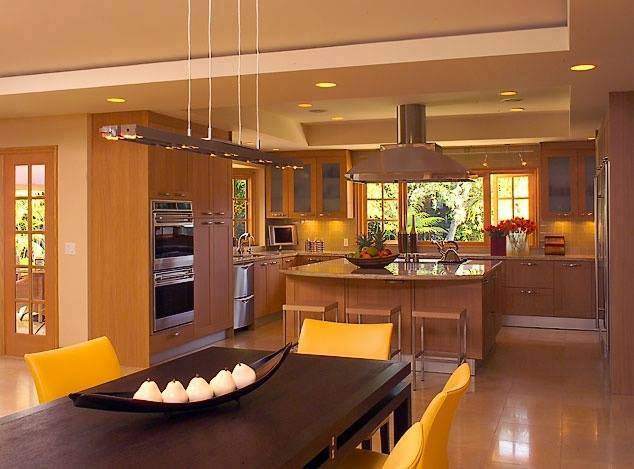Table of Content
The natural architectural landscape, surreal hills and meandering water bodies turned muse for this holiday home designed by Humming Tree. The home is a combination of art, furniture and, the use of locally available materials like clay, terracotta and reclaimed wood up the eco-friendly quotient of the residence. Courtyards and double height ceilings dominate the 3,200-square-foot bungalow. Terracotta roof tiles have been used for the roofing as it reduces heat retention. Organic bees-wax and local mixtures of lime have been used to coat the interior walls and exterior wooden surfaces,” says Shekar.

The client wanted the home to resonate with traditional Kerala architecture, with a modern twist. Kerala traditional house designing lent a beautiful look to the house. The house is quite large so there is vast place for designing and at the same time it is very complex task.white is the color texture used in the interior and exterior.
Featured Links
They are designed on the architectural principles of the Thatchu Shastra and Vaastu Shastra. Here are some special features of the Kerala traditional houses. Whether you're looking to create a fully authentic design or simply add a few elements of Kerala style to your home, these tips will help you get started.

Traditional Kerala houses use granite slabs below the ground to avoid dampness. Thatch and clay tiles on the sloped roofs help keep the house dry. Traditional houses of Kerala are energy efficient and are built in harmony with their natural surroundings. For maximum natural light and air passage, courtyards, walls and internal partitions are designed to induce continuous air movement and cross-ventilation.
The Central Courtyard
Houses are constructed as per Vaastu Shastra, which suggests the east and north direction for the entry of a house. Besides aesthetics and comfort, the houses are planned to deal with climatic conditions. Kerala’s traditional houses are built to withstand heavy rain and heat. The traditional architecture of Kerala is known for its use of natural materials and comfortable, well-ventilated interiors. Granaries, cattle sheds, kitchens, dining halls, bathrooms, bedrooms, puja rooms, and a well or pond are part of a well-designed traditional house called nalukettu.

Laterite is the local building block that Keralites use for construction. Timber has also been an important construction material in Kerala. Usually, teak wood, mahogany, sandalwood, and the wood from the jackfruit tree is used for house constructions. Skilled craftsmen showcase their talent through accurate joinery and assembly, and ornate carving on wooden columns, walls and roofs, which are unique to Kerala architecture. Wood is also used for the gables and the roof that are thatched with coconut palm leaves or tiles, and supported by wooden columns and rafters.
Wooden furniture in traditional houses of Kerala
Traditional houses in Kerala are known for their sturdy wooden furniture and intricate wooden carvings. Homes may also have teak or rosewood swings – oonjal – in the veranda or the centre of the living room. The walls are decorated with ethnic art and antiques made from teak, sandalwood and mahogany.

From doors and windows to furniture and decor, wood carvings can be found throughout the home. These carvings are often inspired by nature, with animals and plants being common subjects. To add a touch of authenticity to your own home, consider incorporating some traditional wood carvings into your design.
All these will have a modern touch to make it easier to maintain. Interior and exterior photos, plans, ideas from our completed and proposed works. Browse our latest kerala style house design portfolio for more details. In the traditional homes of Kerala, wooden furniture was widely used. Kerala is well known for its elaborately designed wooden furniture, which showcases its rich cultural heritage. The uniqueness of Kerala’s wooden furniture lies in its intricate craftsmanship.

Vernacular architectural style meets innovative world practices, and a cosy, comfortable home designed by Elemental, emerges. This contemporary home in Kerala speaks an ancient design language. With its spotless white walls and Mangalore-tiled roof, the bungalow reminisces a charming bygone era. “Critical regionalism preserves local architectural identity, retaining its functional features and meeting global standards.
The roof tiles are generally red, but may also be black or brown. 4 bedroom mixed roof modern house rendering in an area of 2165 square feet . Traditional houses in Kerala had two verandahs – internal and external verandah. The external verandah helped to reduce direct exposure to sunlight. The internal verandah allows light to enter the house via a courtyard. Also, it was used for drying rice and as recreational and open space for children to play.

Kizhakkini is the puja room, thekkini is for keeping wealth and family rooms, padinjattini is for storage , and vadakkini is for the kitchen. The outer verandas along the four sides of the nalukettu are enclosed differently. The west and east verandas are kept open while the north and south verandas are enclosed or semi-enclosed. A traditional Kerala house can be nalukkettu (4-block structures), ettukkettu (8-block structure) or pathinarukkettu (16-block structure), depending on the size of the plot. This style of architecture is adopted by both traditional wealthy families, and modern well-to-do families. A nalukkettu that has belonged to a particular family for generations is known as tharavad .

No comments:
Post a Comment